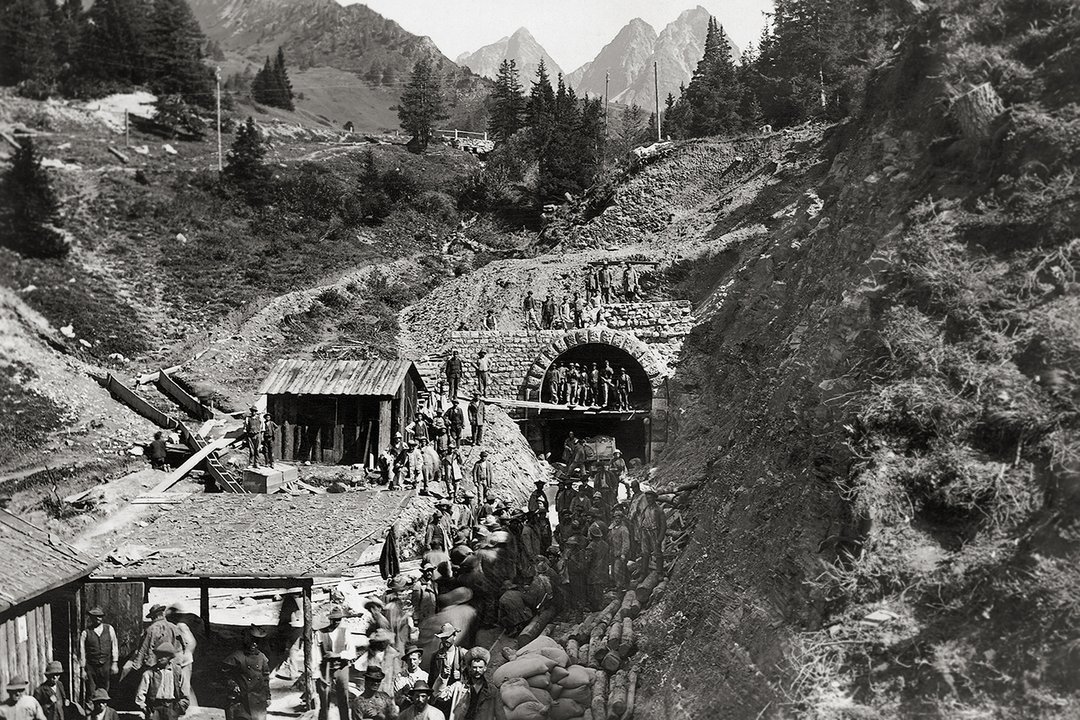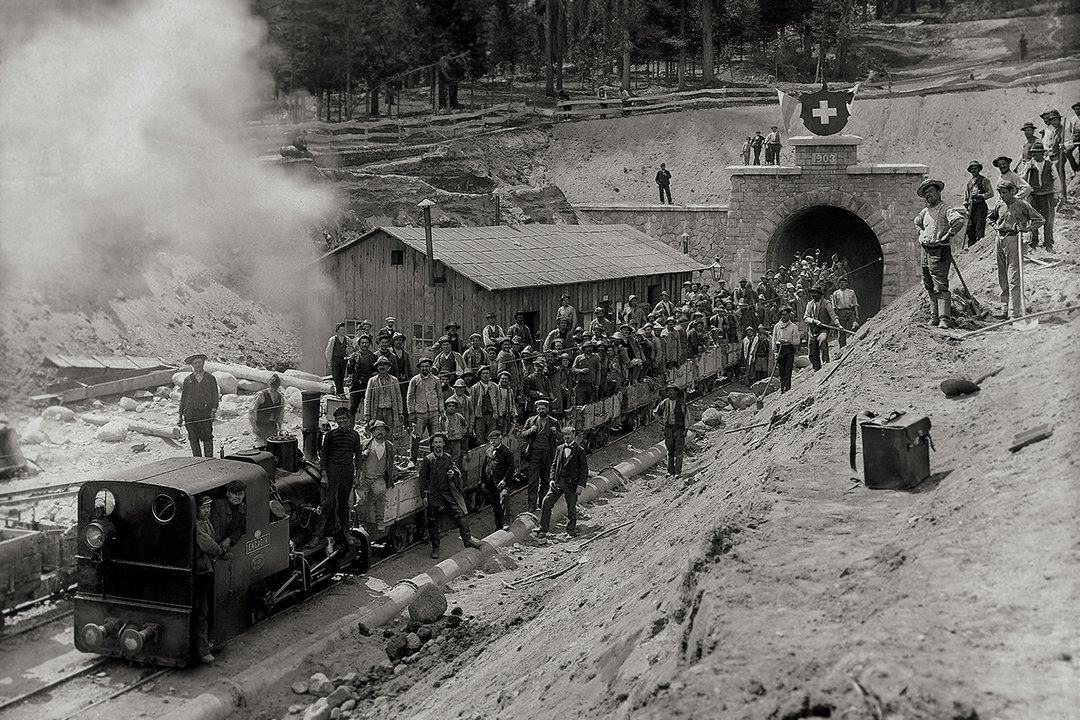Warenkorb
Sie haben keine Produkte im Warenkorb.
Les contenus ne sont pas tous disponibles dans la langue choisie. Désirez-vous découvrir le monde de la Rhätische Bahn dans son ensemble? anglais
At the beginning of the 20th century, the Albula Tunnel was considered a masterpiece of civil engineering. Accuracy down to just a few centimetres demonstrates the first-class work of the engineers at that age. The manner in which miners excavated the tunnel largely by hand, with just picks and shovels, would be unimaginable today.
The historical Albula Tunnel comes with an impressive set of figures: The 5,864 metre-long access through the mountain was completed in just five years, between 1898 and 1903. A total of 1,316 men worked in and around the tunnel, suffering uncountable injuries, including 16 deaths, as they did so. The Albula Tunnel, at an average of 1,800 metres above sea level, is the highest-altitude underground mainline railway crossing of the Alps. After five years of construction work and 7.3 million Swiss francs of expenditure, the tunnel was finally inaugurated on 1st July 1903.

North entrance of the Albula Tunnel during construction (about 1900).
The main sticking-point of construction work was the penetration of the massive 100 metre-long Rauwacke rock formation. A commemorative publication about the Albula Line, from the year 1908, describes the circumstances: “To begin with, the cellular dolostone had the character of a light Tuffaceous rock, which could easily be worked without the use of machines, but as the gallery began to lengthen, from 29th July onwards, to 1,192 metres, the tunnel was suddenly flooded with tremendous amounts of water, which brought such massive amounts of superfine dolomite sand with it that the 500 metres of track and the whole bottom of the excavation became covered.” The stoppage of the drilling machines meant that tunneling came to a virtual standstill, eventually leading to abandonment on the part of construction company originally engaged to carry out the work. The RhB then took on directly the task of dealing with the blockage, which required around a year to finalise.

Change of shift at the south entrance of the Albula Tunnel (about 1900).